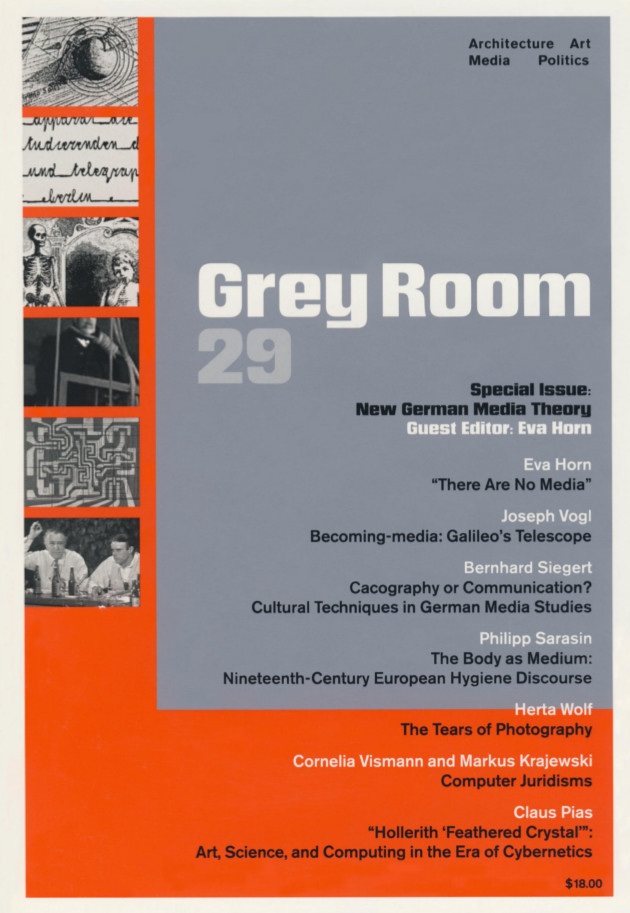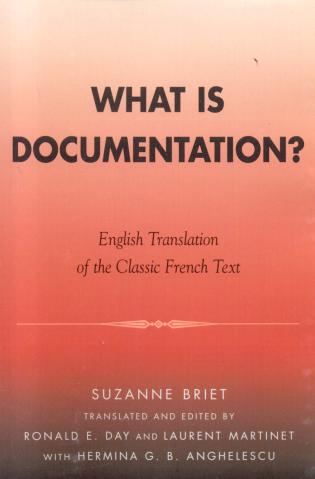Bernhard Siegert: Cultural Techniques: Grids, Filters, Doors, and Other Articulations of the Real (2015)
Filed under book | Tags: · art, cartography, cultural techniques, cybernetics, information, information theory, machine, media, media theory, ontology, painting, perspective, representation, technology

“In a crucial shift within posthumanistic media studies, Bernhard Siegert dissolves the concept of media into a network of operations that reproduce, displace, process, and reflect the distinctions fundamental for a given culture. Cultural Techniques aims to forget our traditional understanding of media so as to redefine the concept through something more fundamental than the empiricist study of a medium’s individual or collective uses or of its cultural semantics or aesthetics. Rather, Siegert seeks to relocate media and culture on a level where the distinctions between object and performance, matter and form, human and nonhuman, sign and channel, the symbolic and the real are still in the process of becoming. The result is to turn ontology into a domain of all that is meant in German by the word Kultur.
Cultural techniques comprise not only self-referential symbolic practices like reading, writing, counting, or image-making. The analysis of artifacts as cultural techniques emphasizes their ontological status as “in-betweens,” shifting from first-order to second-order techniques, from the technical to the artistic, from object to sign, from the natural to the cultural, from the operational to the representational.
Cultural Techniques ranges from seafaring, drafting, and eating to the production of the sign-signal distinction in old and new media, to the reproduction of anthropological difference, to the study of trompe-l’oeils, grids, registers, and doors. Throughout, Siegert addresses fundamental questions of how ontological distinctions can be replaced by chains of operations that process those alleged ontological distinctions within the ontic.
Grounding posthumanist theory both historically and technically, this book opens up a crucial dialogue between new German media theory and American postcybernetic discourses.”
Translated by Geoffrey Winthrop-Young
Publisher Fordham University Press, New York, 2015
Meaning Systems series
ISBN 0823263762, 9780823263769
xiv+265 pages
Reviews: Geoghegan (Paragraph, 2014), Young (New Media & Society, 2015).
Commentary: Martin (Grey Room, 2016).
PDF (8 MB, updated on 2020-1-1)
Comments (4)Grey Room 29: New German Media Theory (2007)
Filed under journal | Tags: · aesthetics, body, code, communication, computing, cultural techniques, cybernetics, information aesthetics, law, media, media studies, media theory, mediality, technology, theory, writing

“If asked for a definition of ‘media,’ the answer given by the authors included in this volume would likely be ‘Es gibt keine Medien’–‘There are no media.’ In 1993, Friedrich Kittler published the essay ‘There Is No Software.’ Three years later, Bernhard Siegert attacked one of the fetishes of the burgeoning German media studies of the 1990s by declaring that ‘There are no mass media.’ Such a dismissal of some of the core concepts of media studies–including any fixed concept of ‘media’ itself may well be the signature of the type of ‘new media theory’ presented by the modest collection of essays in this volume.” (from the Introduction)
With contributions by Eva Horn, Joseph Vogl, Bernhard Siegert, Philipp Sarasin, Herta Wolf, Cornelia Vismann and Markus Krajewski, and Claus Pias.
Edited by Eva Horn
Publisher MIT Press, Fall 2007
ISSN 1526-3819
133 pages
Es gibt kein PDF (removed on 2014-11-15 upon request of the publisher)
Comment (0)Suzanne Briet: What is Documentation? (1951/2006) [French, English]
Filed under book | Tags: · bibliography, cultural techniques, data, document, information, knowledge, knowledge production, library

Born in Paris in 1894, Suzanne Briet was active in the development of what was then known as Documentation but would now be called Information Management or Information Science. In 1931, she participated in founding the Union Française des Organismes de Documentation (UFOD). She was a leader in developing professional education for this new specialty and designed a plan for what would have been the first school of Documentation / Information Science worldwide, had it been established. In 1951, when a school of information science was finally established, Briet was the founding Director of Studies. She became Vice President of the International Federation for Documentation (FID) and acquired the nickname “Madame Documentation.”
What is Documentation? relates this fascinating story and includes the first English translation of Briet’s remarkable manifesto on the nature of documentation, Qu’est-ce que la documentation?. Part I sought to push the boundaries of the field beyond texts to include any material form of evidence (“Is a living animal a document?” she asked). Part II argued that a new and distinct profession was emerging. Part III urged the societal need for new and active documentary services.
This tract remains significant due to its continuing relevance towards understanding the nature, scope, and societal impacts of documents and documentation. Briet’s modernist perspective, combined with semiotics, deserves attention now because it offers a sturdy and insightful alternative to the scientific, positivist view that has so dominated information science and which is increasingly questioned.
Publisher EDIT, Paris, 1951
48 pages
via Laurent Martinet
English edition
Translated and edited by Ronald E. Day and Laurent Martinet with Hermina G. B. Anghelescu
Publisher Scarecrow Press, 2006
84 pages
via Ronald E. Day
Reviews: W. Bede Mitchell (College & Research Libraries, 2007), Jonathan Furner (Libraries & the Cultural Record, 2008).
Publisher (EN)
Qu’est-ce que la documentation? (French, 1951, updated on 2017-11-16)
What is Documentation? (English, 2006, PDFs), single PDF (OCR’d, added 2014-8-14 via Marcell Mars)

